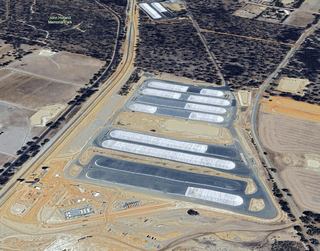Two Cranes, One Chance: Lessons from a Dual Silo Lift in Broomehill Village, WA
When lifting a tall, top-heavy structure like a silo, there’s no margin for error—especially in regional settings where ground conditions, wind exposure, and limited support infrastructure pose unique challenges.
In Broomehill Village (WA 6318), our team completed a critical dual-lift operation to install a vertical steel silo, safely positioning it onto its foundation using a 160t and a 250t mobile crane in tandem.
This post outlines the key takeaways and engineering decisions that made the lift a success, in full compliance with Australian standards.
Project Snapshot
Location: Broomehill Village, Western Australia
Structure: Steel grain silo (preassembled vertical unit)
Weight: 46 tonnes
Cranes Used:
• 160t (bottom end, 12m radius, 37m boom)
• 250t (top end, 8m radius, 31.1m boom)
Method: Dual-lift with spreader bar and tailing strategy
Final Placement: Silo stood upright by 250t crane after tailing
Key Lessons from the Dual Silo Lift
1. Ground Preparation Is Everything in Rural Sites
Grain silo foundations are typically remote and built on compacted earth or gravel—not engineered slabs.
Lesson: Pre-lift site assessments must include ground-bearing verification for crane outriggers. We used compaction test data to verify each crane pad could withstand the load.
2. Dual-Lift Sequencing Must Account for Load Swing
Unlike rigid towers, silos tend to shift center of gravity mid-lift—especially if there’s slight asymmetry or if internal bracing flexes.
Lesson: Both crane operators must be in synced communication, and the lift plan should include staged increments with visual cues and taglines to manage swing.
3. Wind Load on Curved Surfaces Is Amplified
A silo’s round, vertical shape turns it into a sail under moderate wind. Even at 5–6 m/s, the structure can twist or sway in unexpected ways.
Lesson: We monitored real-time wind data and paused the lift at 6.5 m/s, following AS 2550 crane operations wind thresholds.
4. Spreaders Aren’t Just for Lifting—They Prevent Structural Collapse
Using a certified spreader bar allowed even distribution across lifting lugs welded to the silo.
Lesson: Without this, localized stress could’ve led to deformation, especially around thin-wall sections at the top rim.
5. Tailing the Load Requires Precision Timing
The 160t crane was used to tail the base of the silo during the lift. If the lead crane (250t) outpaces the tail crane by even 200mm, the entire lift angle becomes unstable.
Lesson: We used laser rangefinders and spotter feedback to sync hoisting speeds and maintain center alignment.
6. Remote Locations Need Redundant Risk Controls
In isolated towns like Broomehill, backup gear and personnel aren’t a phone call away.
Lesson: Our planning included on-site spares for rigging gear, backup radios, and pre-checked evacuation routes for any unexpected incident.
Conclusion: Regional Doesn’t Mean Risky
This Broomehill silo lift demonstrates that with smart engineering, precise crane coordination, and adherence to Australian standards (AS 1418, AS 2550), even remote projects can be executed to the highest level of safety and reliability.
Whether it’s a tower or a silo, the lesson is the same: success isn’t in the steel—it’s in the study.

